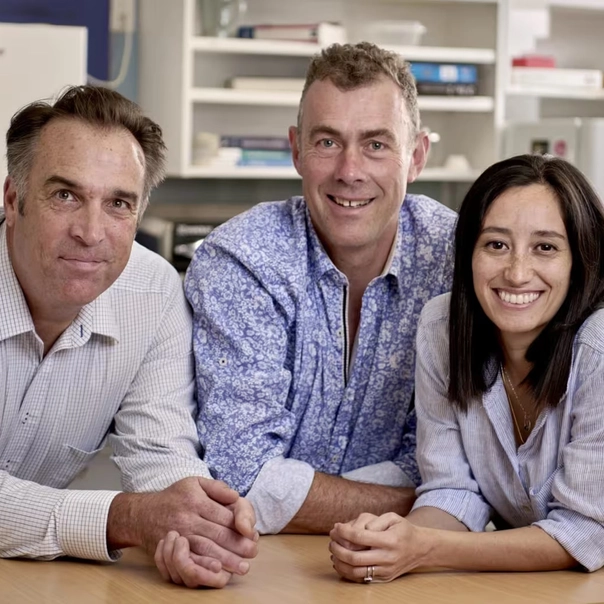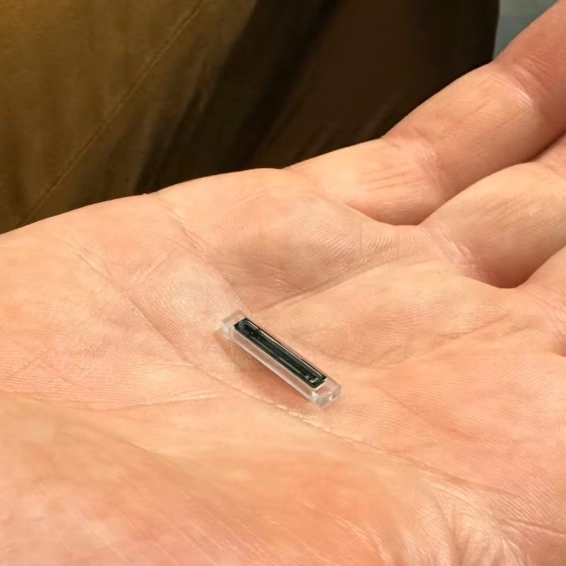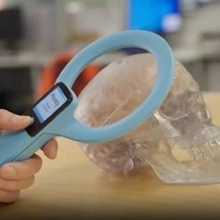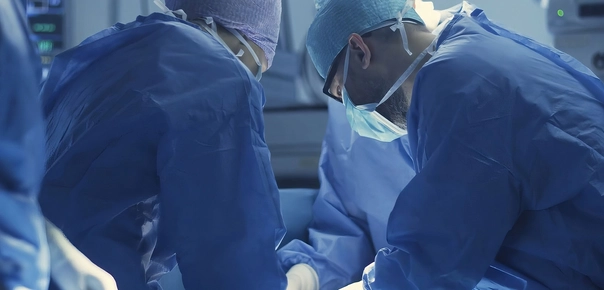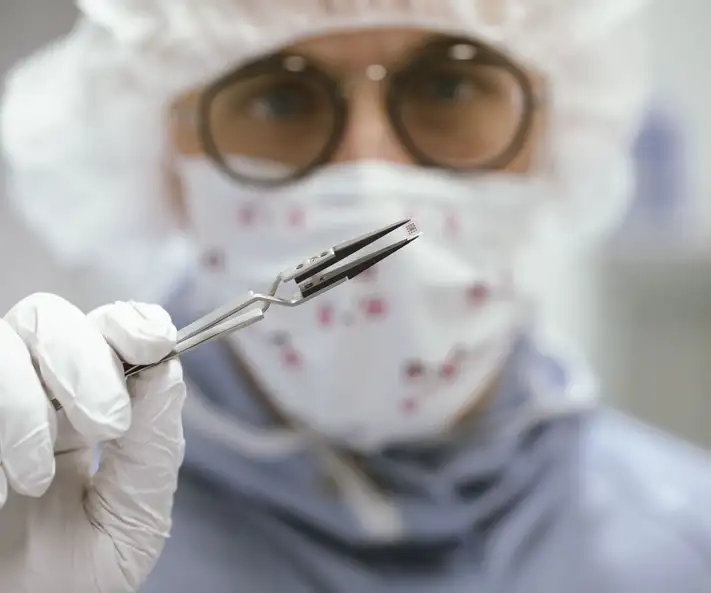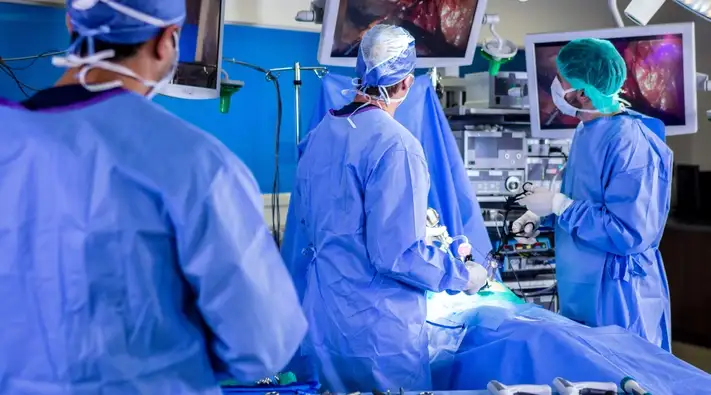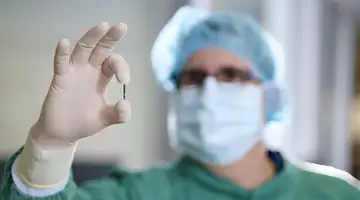
When the pressure rises
Headaches are manageable for most, but for those with hydrocephalus, they can signal severe issues requiring hospital visits or brain surgery. New Zealand’s Kitea Health offers hope with a microsensor that monitors brain pressure, using SCHOTT’s glass tech for durability.
Kitea Health’s brain implant offers a breakthrough for hydrocephalus management and future medical applications.
- Hydrocephalus causes excess brain fluid, leading to pressure, headaches, dizziness, or damage.
- Kitea Health’s innovative implant measures brain pressure and alerts patients before serious problems arise.
- Inside the implant is a 0.3g wireless microsensor with sensitive electronics sealed inside a Proteon™ all-glass encapsulation.
- This technology holds potential for other medical applications, such as cardiac monitoring.
Josh, who has suffered from hydrocephalus since childhood, was lucky for a long time. For many years his shunt, which drains excess cerebrospinal fluid like a drain, remained free of blockages – allowing him to almost forget about his condition. However, he recently experienced his first failure, marked by severe pain and nausea while playing squash with a friend. "I had headaches that gradually increased," he recalls. A hospital check-up revealed that too much fluid had accumulated. "I had no problems for 17 years. It didn't affect my life, and then these intense headaches occurred."
Today, an innovative implant has given Josh the freedom to live without the fear and uncertainty that once accompanied every headache. The invention of New Zealand start-up Kitea Health enables him to continuously measure his intracranial pressure. The 17-year-old boy is among the first 20 hydrocephalus patients participating in a clinical trial that started last year. Since implantation, Josh has felt safe and "dramatically, completely normal." This is because the sensor does its job and continuously provides him with detailed data to determine whether potential headaches are just that, or something worse.
Easily treatable disease
Our brain is a susceptible organ that requires protection, much like an expensive vase in a moving box. Cerebrospinal fluid (CSF) plays this protective role, cushioning the brain from shocks like natural bubble wrap.
However, an excess of this fluid does not mean more protection but can lead to hydrocephalus, a condition where increased intracranial pressure becomes life-threatening. Symptoms range from headaches and dizziness to severe neurological deficits and damage.
To address the pathological accumulation of CSF, a shunt can be implanted in the brain. This device functions like a drain, channeling excess fluid from the brain's ventricles to the abdominal cavity, thereby normalizing brain pressure. While the solution seems straightforward, the procedure is complex and invasive, involving the insertion of a long tube and a valve into the brain. In children, additional challenges arise as growth can alter the tube's position.
Various shunt technologies and valve designs have been developed and tested since the 1960s. Despite significant technological advancements, modern shunts still face an unpredictable issue: they can be unreliable and prone to blockage.
What is hydrocephalus?
Hydrocephalus is a severe condition in which excess cerebrospinal fluid accumulates in the brain, leading to increased intracranial pressure and dilation of the brain's ventricles. Commonly referred to as "water on the brain” or “water baby syndrome," it affects approximately 1 in 1,000 newborns but can occur at any age.
There are many causes of hydrocephalus. Usually, there is a disturbance of the cerebrospinal fluid circulation in the brain. Hydrocephalus can be congenital, present at birth, or acquired later due to factors like brain tumors, brain injuries, or a stroke. A distinction is also made between acute and chronic hydrocephalus.
Hydrocephalus has different forms: Hydrocephalus occlusus is characterized by a blockage that prevents cerebrospinal fluid from circulating correctly. Hydrocephalus nonresorptivus occurs when the cerebrospinal fluid is not adequately reabsorbed into the bloodstream.
Symptoms vary by age. Babies often exhibit an enlarged head due to the soft skull accommodating the pressure. Older children and adults may experience headaches, visual disturbances, and balance problems. Hydrocephalus is typically treated surgically, focusing on addressing the underlying cause. The standard procedure involves inserting a shunt to drain excess cerebrospinal fluid.

"Around half of all shunts in children fail within the first two years, meaning they have a fifty percent chance of requiring neurosurgical intervention. Some say that shunts have the highest failure rate of any medical device on the market," says Simon Malpas, Professor of Physiology and Bioengineering at the University of Auckland. He has extensively researched this issue and is committed to helping people with hydrocephalus. The frequent failure of shunts is alarming, and even minor symptoms like headaches or nausea can cause panic among patients and their families.
An MRI or CT scan is necessary to determine if a shunt functions correctly. "On average, a child with hydrocephalus spends around 30 days a year in the hospital, either due to false alarms or because the shunt actually needs to be replaced," Simon adds. These frequent hospital visits can lead to significant psychological stress for patients and their families. Despite 70 to 80 percent of these emergencies turning out to be false alarms, ignoring symptoms is not an option given the potentially life-threatening nature of the condition.
Lifelong brain pressure monitoring

Shunt failure is so common that headaches or nausea can cause panic among patients.
To address these challenges, Simon Malpas co-founded the start-up Kitea Health with Natalia Lopez and Bryon Wright. Based in New Zealand, the company has developed a groundbreaking microsensor to measure brain pressure. Weighing just 0.3 grams and roughly like a few grains of rice in size, this innovative device is the first completely wireless microsensor that can be implanted in the human brain. "It's pioneering because it’s the first time in medical technology that electronics, power supply, and data transmission have been integrated into such a small device," Simon proudly states. "It is significantly smaller than anything that has come before."
Other implants require wires for measurement or batteries for direct energy storage, making them larger and necessitating the placement of some components in different parts of the body due to limited space in the skull. In contrast, Kitea Health’s device houses all electronic components within a hermetic glass encapsulation. This design ensures the device is reliably sealed and biocompatible, can make it safe for lifelong use by hydrocephalus patients.
The data from the implant is read using an external device called a wand. This wand, featuring a large ring at its upper end, can supply energy to the implant and transmit information. Patients can now check their brain pressure themselves in just a few seconds, eliminating the need for frequent hospital visits. The data is logged in an app, allowing for trend identification and secure sharing with doctors. "It provides direct information from the brain, offering insights that help medical professionals make better treatment decisions based on real-time data," Simon summarizes.
Why glass is indispensable for medical progress
The choice of housing material is crucial in the development of modern brain implants, and for this novel implant, a Proteon™ all-glass encapsulation by SCHOTT Primoceler Oy was both a practical and technical necessity for Kitea Health. Simon emphasizes that glass was the only viable material due to its biocompatibility and durability – two essential properties for an implant designed to remain permanently in the body.
The biocompatibility of glass helps to ensure that the human body does not reject it, a critical factor for implants in direct contact with sensitive organs like the brain. Additionally, glass’s durability allows the neural implant to operate reliably for many years, making it an indispensable component in this medical advancement.
Another decisive factor in choosing an all-glass package was the desired small form factor. To make the device as compact as possible, a material that could meet stringent size requirements was essential. Glass allows for the precise production of very thin sealings. This would simply not have been possible with a material such as titanium.

Another reason glass is indispensable for the implant is its role in pressure measurement. The device measures intracranial pressure through the capacitance of a metal layer embedded between two thin layers of glass in the implant's housing. This technology is similar to a touchscreen, where pressure on the glass surface generates signals. In the implant's case, the pressure exerted by the fluid causes minute changes in the conductivity of the metal layer, which can be measured to indicate whether too much fluid has accumulated and if the shunt is malfunctioning.
Only a glass body provides the necessary properties for this high-precision measurement. Other materials, such as titanium, would not meet these requirements. "I would say that we couldn't have made the implant from any other material," explains Simon.
Hermetic all-glass encapsulation for more safety
SCHOTT Primoceler Oy played a crucial role in Kitea Health’s development of the innovative brain implant. Their laser-based glass micro-bonding technology used in Proteon™ glass housings enables fully hermetic sealing, even for ultra-miniaturized implants less than one millimeter in size. This laser process, conducted at room temperature, eliminates the need for adhesives or additives, reducing potential weak points and enabling compatibility with the human body.
"Our glass encapsulation allows us to manufacture even the smallest implants with the highest precision. The result is a hermetically sealed and biocompatible solution, which Kitea Health evaluated as the enabler for the development of its innovative device," summarizes Ville Hevonkorpi, Managing Director of SCHOTT Primoceler Oy.
Initial clinical trials with real-time data
Kitea Health is now conducting its first clinical trials in Auckland, involving ten adults and ten children. A larger study with 150 participants in New Zealand and the United States is planned for next year. The company aims for full approval by the Food and Drug Administration (FDA) in the USA within about two years.
"The next crucial step is to conduct extensive clinical trials to validate the safety and efficacy of our implant. These tests will allow us to optimize the system and ensure that it meets the requirements of everyday clinical practice. Our aim is for patients to benefit from this technology in the near future," explains Simon.
A wireless and cable-free implant like Kitea Health’s promises significant benefits not only for hydrocephalus patients but also for monitoring other health conditions. Pressure measurement can provide critical information about the state of health in various body parts. Simon outlines the technology's vast potential: "Our chip is designed to measure the pressure of fluids in the brain or heart – a critical parameter that can be affected by genetic conditions, heart failure, or traumatic events such as car accidents or strokes. With this technology, we can monitor pressure directly in the body and provide doctors with valuable real-time data, enabling faster and more precise treatment."

